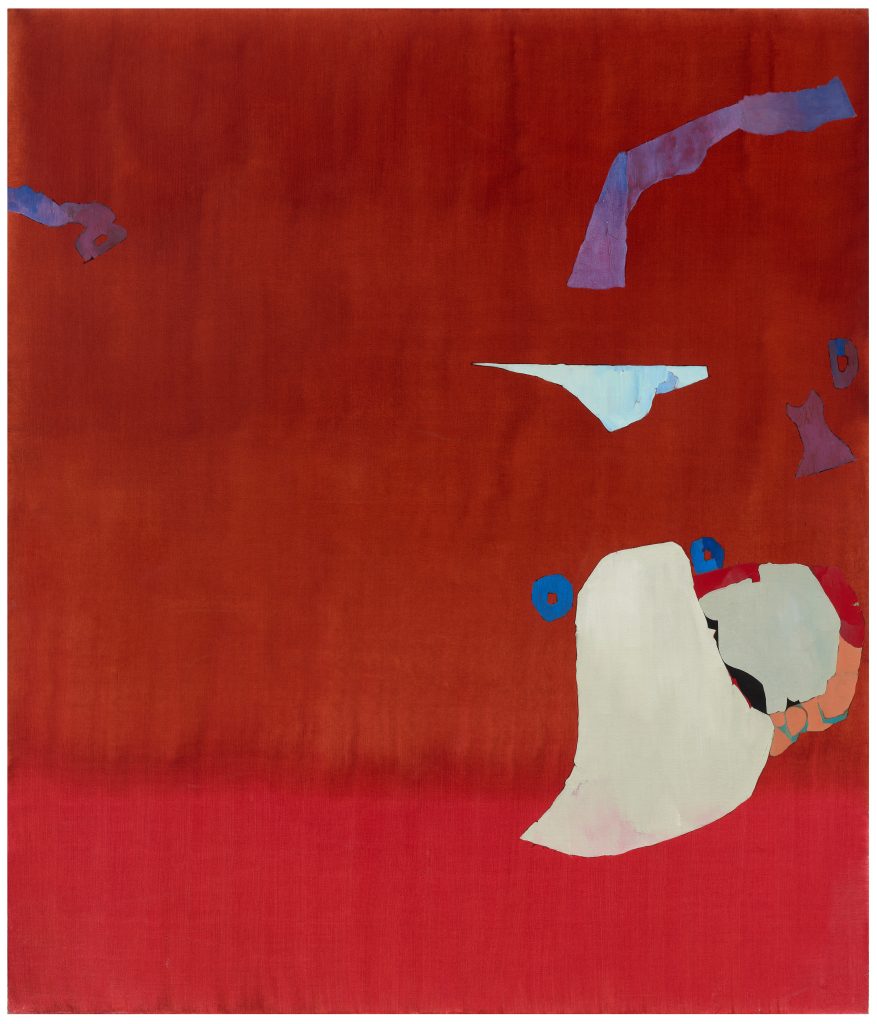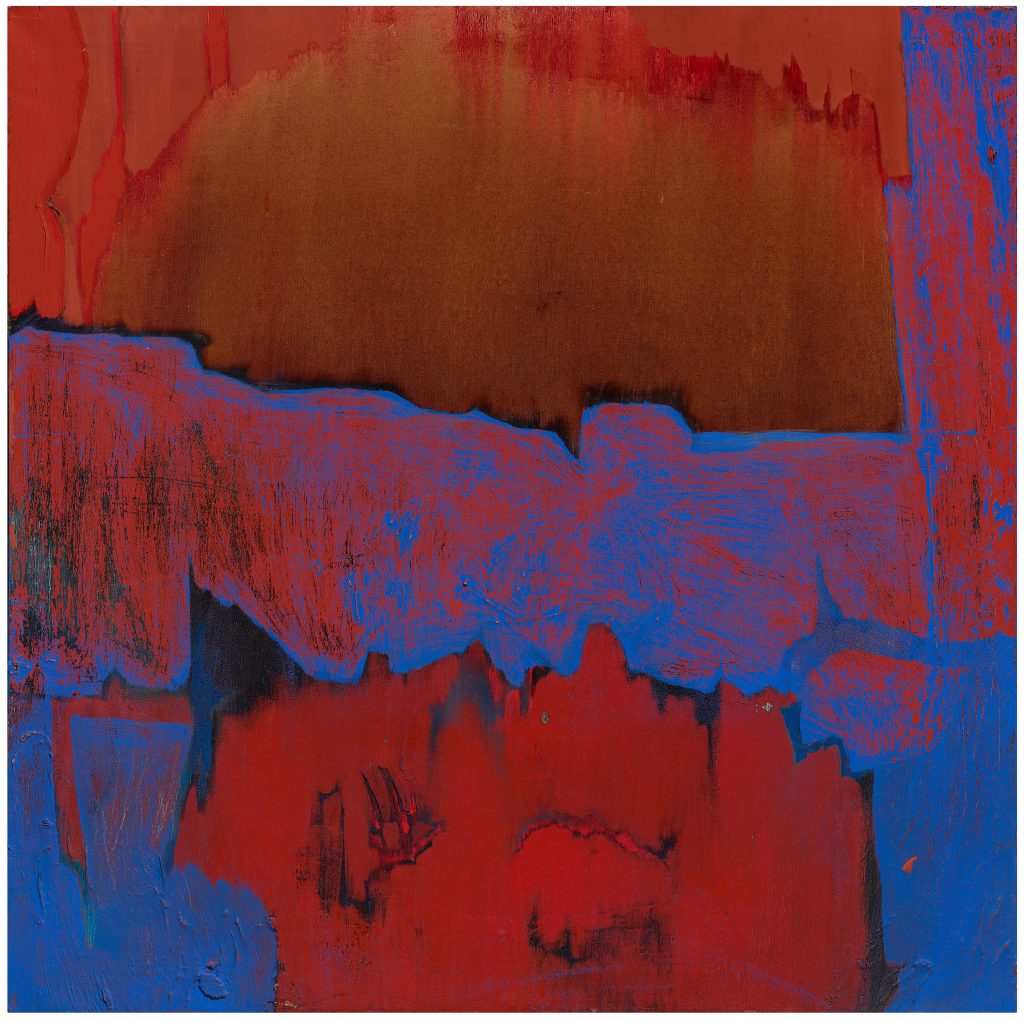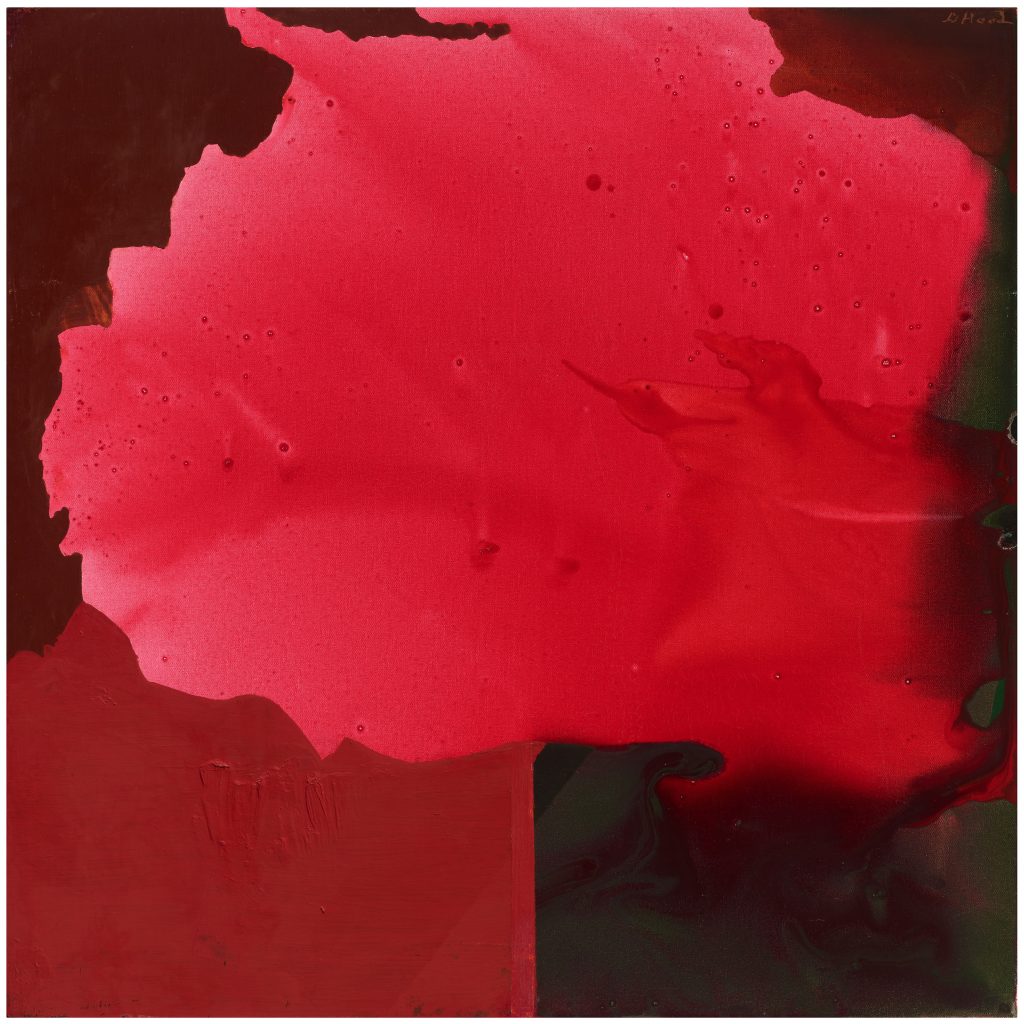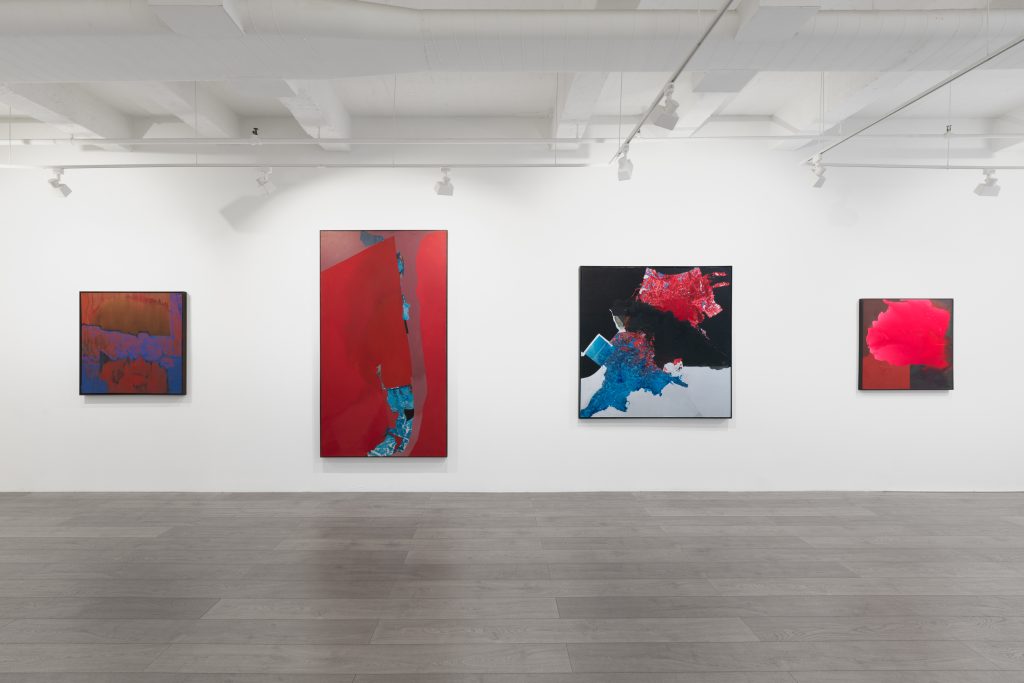I was instantly captivated by the artworks from the late Dorothy Hood in a new exhibition at Hollis Taggart in New York’s Chelsea neighborhood, and they stick with me.
I stopped in front of “Space Float” (ca. 1979), comprised of oil on canvas and measuring 70 inches tall by 60 inches wide, and just gazed awhile, captivated. This piece blends vast fields of color that seem to extend backwards into a created, felt, and experiential expanse just as much as they’re materially spreading across the canvas — place, without specific form — with smaller forms scattered across the surface that feel like light breaking through, the origin of which is a hidden, enriching mystery.
Hood’s paintings (which are just a portion of her showcased work, also including drawings and collages) tower above you, both in the physical size some reach and in their internal stature, imparting a sense that they extend well beyond their physical confines while remaining squarely connected to where they’re starting out. In the strength of that connection, which feels grounding where you might not expect it, there’s an imprint of personhood and emotional connection — recognition, even — in the middle of the spatially esoteric: something incomprehensible within the context of what’s acutely visible in the three-dimensional world.
Places I’ve been before no longer make spatial sense in my recollection as details fade over time, but I know I was there, and they persist all the same, renewed.
The grandiosity is uncertain and imposing, but luminous — like space itself is, if you think about it. The “space” in the title of the above mentioned painting refers to actual space, as in what’s beyond us and our planet physically if you look upwards. Hood, who passed away in 2000, connected with “scientists and astronauts” and made artworks around the subject among many other fascinating works, the gallery explains.
And you feel amid this exhibition’s artworks their aesthetic placement not unreachably beyond you but still on some other, non-physical plane. And that plane is lingering without the need for obvious, direct explanation. Preceding growth was something unseen, and we’re standing, living, and watching within its wake: a story, cascading.
It’s similar to how a memory and the feeling of a memory — something I think about a lot in the context of non-representational fine arts — sometimes are what they are. There is no altering a memory’s origin, though as reflected by the unspecific nature of many of the forms in Hood’s art, its feeling and the experience of it may grow — beyond a direct, verbal explanation. And still, these artworks remain just shatteringly sincere. In their forms that largely exist within a world outside of that in which we live on the surface of this planet, Hood drew forth honesty, care, and a vision of elevating, and even unifying, spatial persistence. All of this is continuing.
There is a lot of red in the paintings, and as the hues of it seemed to merge into each other across each canvas where that’s the case, I got the mental sensation that the colors were consuming each other from the inside out: each replacing the one adjacent to it while it was replaced. A process defined by drive.
And on that note, that’s something particularly special about the paintings in this exhibition, I think. (The artworks of other material varieties are striking as well, but I just happened to linger on these the most, personally.)
Hood imparted these vast, incalculable areas of color with personal presence: ambition, drive, plus the distinct sensation of the wake of someone’s or something’s course of action, amid which the obvious is held just out of reach and you don’t actually know its full nature. The bigger areas of color tend to rebuff potential strictures with an underlying, assertive force.
A memory itself becomes something that takes on a life of its own: it has agency, somehow. The sensation of a place, whether in the moment or recollected, it becomes its own being, teeming with its own vivacity, even if that vivacity totally rejects — or at least mostly rejects — the prospect of familiar, spatial confines. But desire — the basic, logistical desire that ever brought you to a new place, the implicit notion in an object sitting in some spot that there was a want that put it there — this feels made manifest and its own within these paintings. It becomes an entire atmosphere.
In the way Hood’s areas of colors bleed into each other — in a manner that is controlled enough to suggest an internal drive within each, original swath of hue rather than an external force operating upon the colors and forms — there’s a confidence and an assurance, even over the breaks that do appear in Hood’s engrossing, artistic continuums. The question now is whether you’ll see it.
Hood’s exhibition continues through April 12. Read more at this link.



Featured image: Dorothy Hood: “Remember Something Out of Time” (installation view), Hollis Taggart, New York, Feb. 27 – April 12, 2025. Courtesy of Hollis Taggart.
You may also like
-
Diana Kurz at Lincoln Glenn in New York: A Review of a Shining Art Exhibition
-
Dustin Hodges at 15 Orient in New York City: An Ensnaring Exhibition at an Exciting Gallery
-
Maren Hassinger at Susan Inglett Gallery in New York: Reviewing an Uplifting Art Exhibition
-
Enzo Shalom at Bortolami in New York City: Reviewing an Entrancing Exhibition of Paintings
-
“Ben Werther: Townworld” at Amanita in New York City: Reviewing a Richly Memorable Art Exhibition
